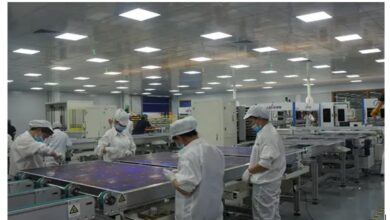Wine-Tasting in Mendoza vs Wine-Tasting in Napa Valley

Whatever happened to the romance and charm of Napa Valley? It’s an all-too-familiar lament, and one with a simple answer: they’ve been put in the shade by Mendoza, Argentina’s premier winegrowing region. Likened to the pre-boom Napa Valley of the early 1980s, Mendoza is an emerging destination of empty roads and fabulous, exotic wines. And the vineyards here, set against a splendid backdrop of the soaring, white-tipped Andes, are some of the most scenic in the world.
They cross deep fertile valleys and high plains and skirt around enormous vineyards that sweep for miles across the picturesque foothills, boasting fabulous Andean panoramas at virtually every turn. This dramatic landscape has hundreds of vineyards, from large, family-owned estates to state-of-the-art boutique wineries and little rustic bodegas.
A lazy vineyard walk is the perfect prelude to intimate tastings with wine experts who speak passionately about their produce. There is little show here, only great wine. Stop at a high-end estate for an evening rooftop tasting. Watching the sun set behind the towering Andes as aromatic premium varietals roll across your tongue is an exquisite experience.
Stay overnight at a luxury wine spa before visiting a small bodega that has remained unchanged for a century, with cobbled courtyards that open directly onto the vineyard. Here, sweating mules still plough between the vines, grapes are pressed by hand, and ice-cold run-off from the Andes irrigates the fertile land.
THE BUILD-UP
Napa Valley, which is just an hour north of San Francisco by car, is renowned for its world-class wines. Each year, hundreds of thousands of enthusiasts visit its 300 or so wineries by bicycle, luxury 4WD, hot-air balloon, or aboard the Napa Valley Wine Train. Rolling green hills provide a picturesque backdrop to wine crawls in the area.
THE LETDOWN
Napa has sadly shed much of its original charm. Tours emphasize entertainment over wine and tastings have a happy-hour feel, led by volunteers that are more like bartenders than wine experts. Highway 29, the region’s main road, is bumper to bumper with cars during the high season.
GOING ANYWAY?
Try to visit outside the peak season. Spring is a great time to go, when the weather is warm, there are fewer tourists and the winery owners are less busy. If you plan on traveling in the high season, aim for a midweek stay and book early-morning tastings to avoid the crowds. Try the wineries on the Silverado Trail, a more scenic, less-traveled alternative to Highway 29.
PRACTICAL INFORMATION
Getting There and Around
There are regular flights from Argentina’s capital, Buenos Aires, to Mendoza City. Shuttle buses run from Mendoza’s airport to the city center. The region’s three main wine-growing areas – Luján de Cuyo, Valle de Uco, and Maipú – are only a short drive away. Tour agencies run tours of varying lengths and provide itineraries should you wish to explore alone.
Where to Stay
Nestled at the foot of the Andes in its own vineyards, Cavas Wine Lodge boasts luxury suites and a spa with wine-therapy treatments.
When to Go
Visit during the harvest season from February to March, when visitors help with grape-picking and take part in Vendimia, the area’s lively wine-harvest festival.
Last word
Malbec enthusiasts can attend gourmet lunches hosted by winery owners who pair the wine with local cuisine, or travel on horseback to vineyards where the grape thrives. The riding routes skirt herds of guanacos beneath the gaze of Andean condors gliding high in the sky. Ahead, among a whirl of soaring rock faces, is Aconcagua, the highest peak in the world outside Asia. It’s a dizzyingly beautiful scene.
Weather plays a crucial role in our daily lives, influencing our activities and decisions. Whether it’s planning a picnic, preparing for a storm, or dressing for the day, weather impacts our choices. Understanding weather patterns allows us to anticipate and prepare for various conditions, from sunny days to severe storms.
Weather also affects agriculture, transportation, and overall environmental health. With its constant fluctuations, weather keeps us on our toes and reminds us of the dynamic nature of the world around us. Appreciating and respecting the power of weather is essential for our safety and well-being.





